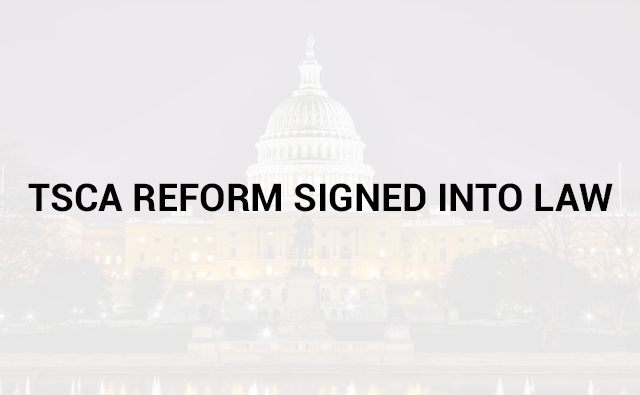Industry News, Legislation
Update: TSCA Reform Bill Signed into Law: What You Need to Know

Industry News, Legislation

Link: Update: TSCA Reform Bill Signed into Law: What You Need to Know | perfumerflavorist
A bill amending the Toxic Substances Control Act (TSCA) to revise regulations on chemicals such as Methylene chloride in the U.S., the TSCA Modernization Act of 2015, has been signed into law by the president and the Environmental Protection Agency (EPA) is taking steps to implement it.
Following the signing of the bill into law, the International Fragrance Association (IFRA) North America said it will “continue to provide meaningful input through the regulatory process.” IFRA North America will be offering a webinar on July 12 to provide an overview of the legislative changes that were made, the potential impact on the fragrance industry, and what to expect moving forward.
“We are happy that TSCA is now signed into law,” Farah Ahmed, IFRANA’s president and CEO, told P&F. “Whether the rule-making resulting from this legislation will result in a smoother process remains to be seen. But the fact that it provides a focused, scientific approach with clear timelines is definitely a step in the right direction.”
Ahmed continued: “As with any new legislation, there will be challenges and IFRANA fully expects to have to work through similar issues here – e.g., ensuring industry and government have the same understanding regarding requirements, ensuring expertise is shared between industry and government in order to improve the process going forward, etc.”
U.S. Senator Tom Udall (Democrat-N.M.), a co-sponsor of chemical safety legislation, said the law now requires:
H.R.2576 – Frank R. Lautenberg Chemical Safety for the 21st Century Act passed the House by a 403 – 12 vote. The bill passed by a 391-1 vote in the Senate back in December 2015. Because of a court case in 1991, the EPA lost its power to regulate or remove hazardous chemicals from the marketplace, said Udall.
“For nearly four decades, the United States’ chemical safety law had been broken, leaving families in New Mexico and around the country at risk,” said Udall. “That’s why I wrote a bill to reform our nation’s chemical safety program.”
Under the law, the EPA must initiate 10 or more risk evaluations in each fiscal year. The EPA is authorized to require testing on a chemical when it is necessary to conduct an evaluation. If an evaluation determines a chemical will pose an unreasonable risk, the EPA must issue a risk management rule for the chemical.
The EPA has made recent risk reduction actions on a number of chemicals including:
“With a modernized TSCA American families will have even greater confidence in EPA’s ability to assess the safety of many of the materials used in the products we enjoy every day, and industry will have the certainty needed to invest in our future,” Ahmed concluded. “These are all good things for our nation.”
Copyright of this article by Perfumerflavorist. We are sharing and promoting the market innovation.
If you like this article, kindly to visit www.perfumerflavorist.com